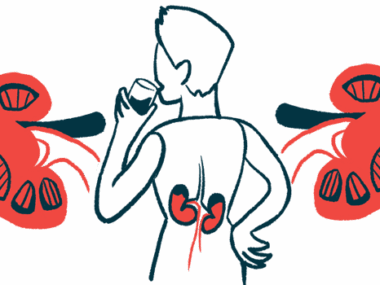It Could Always Be Worse: My Husband’s Journey to Diagnosis
Written by |

Five years ago, my husband, Ronald, and I were overwhelmed with financial worries. Our business was struggling thanks to four broken contracts, a leaky roof, and an impatient banker. We worked long hours, juggled credit cards, sold the convertible, chased every lead, and hoped we could save what we had built over the past 25 years.
Partners in life and work, Ronald and I lost a lot of sleep, but not our sense of optimism. We packed lunches, grateful we could eat them together in our own damp building. We made home-cooked dinners and toasted our efforts with cheap wine. We went for drives in the old car with the windows down, admiring the lush scenery and smelling the sweet spring air.
We told ourselves we were fortunate this was only about money. We were hopeful we could recover financially, and we were confident we would get through this together, no matter what, because it could always be worse.
Then, suddenly, it was the worst: My husband was dying.
He slept in one Saturday morning in May. I got up and savored the coffee and a few quiet hours to work on plans for his solo exhibit at the local art center. He had tried to convince me to cancel the show, thinking it was a waste of our limited resources. I knew we needed to make sacrifices, but I was convinced we needed a goal beyond the 30-day billing cycle.
I checked on him at lunchtime, and he was tired, queasy, not hungry. I happily decided the rest of my day would be spent in sweats, with a simple sandwich and grand gallery plans.
By Sunday afternoon, I insisted on taking his temperature, which was only slightly elevated and could be attributed to hibernating under the covers all weekend. The initial nausea was gone, so I made him sit up, make some conversation, and have a little supper. We called it an early night, as we were both exhausted from work and worry over the past year. We probably just needed a good rest.
On Monday, my concern increased along with his stubbornness. He was not in pain and insisted he was too tired to go to the doctor. I reminded him that our employees had to bring a doctor’s note to justify a third sick day. We compromised. He showered while I changed the bed, then we checked his temperature and blood pressure, which were both a bit off but not alarming. He went back to sleep and I worked in the home office.
I frittered the fourth day away with indecision. He seemed to be getting neither better nor worse. I fretted over whether to call the doctor, but with no significant symptoms or numbers to report, I let him sleep and let the day slip away.
When I was ready for bed I woke him, noticed he was warmer, then saw his skin was blotchy. I suggested we go to the emergency room. “OK,” was all he said. That was when I knew he was in trouble.
It was a quiet and slow emergency — no sirens, no high speeds. I drove to the hospital and filled out forms. We were parked in a room where he was hooked up to monitors and visited by nurses and doctors who read the vital signs and tried the usual treatments to stabilize his numbers, to little effect.
Finally, the hematologist on call was called in during the wee hours. He had said he would be there on the morning shift but was told the patient would not be; he needed to get to the hospital immediately. He did, and managed, along with the nephrologist, to pull my husband through the next uncertain hours and days.
Three days later came the tentative diagnosis that would change our lives, priorities, and roles. My husband probably had a disease called atypical hemolytic uremic syndrome (aHUS).
We truly had been fortunate when we were only worried about money, which suddenly seemed like a simple and ordinary problem. Now we were facing a rare condition with a mysterious cause and a dismal prognosis. But in those first moments, we had hope. We had a name (that we couldn’t pronounce or remember!) for the problem and options for treatment. We had a strong marriage and a shaky business, and a shared focus on the order of their importance.
I told the doctors we would do whatever they recommended. I called the banker and asked him to be patient until we got home — a home we were no longer so desperate to save. Then, we embarked on a journey that would change and challenge us physically, spiritually, and emotionally. Five years later, I am still a small business owner and homeowner, but I am most grateful for my newest role: caregiver to my persevering husband.
***
Note: aHUS News is strictly a news and information website about the disease. It does not provide medical advice, diagnosis, or treatment. This content is not intended to be a substitute for professional medical advice, diagnosis, or treatment. Always seek the advice of your physician or other qualified health provider with any questions you may have regarding a medical condition. Never disregard professional medical advice or delay in seeking it because of something you have read on this website. The opinions expressed in this column are not those of aHUS News or its parent company, Bionews, and are intended to spark discussion about issues pertaining to aHUS.





Leave a comment
Fill in the required fields to post. Your email address will not be published.